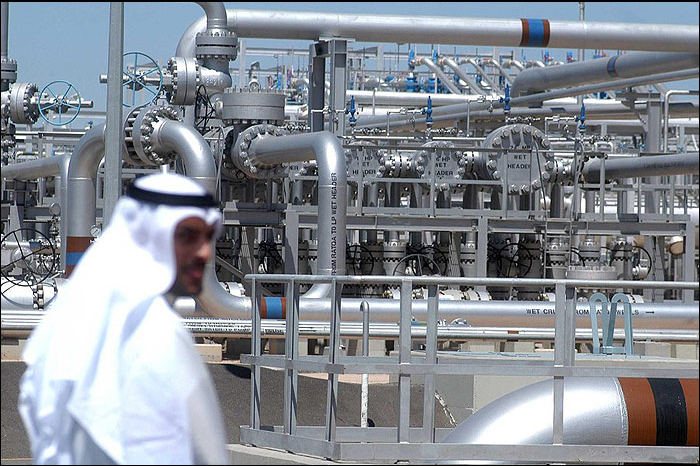As part of its efforts for economic development and upgrading its regional and international standing, the Kuwaiti government is seeing energy as a driving force. Given Kuwait’s rich resources and income, energy would be instrumental in financing its ambitious plans. Kuwait has also been using oil bonanza to invest in renewable energies.
A leading oil producer and exporter, Kuwait is a founding member of the Organization of the Petroleum Exporting Countries (OPEC). Holding the world’s 5th largest oil reserves, Kuwait is the fourth richest Arab League nation in terms of per capita income. The petroleum industry is the largest industrial sector in Kuwait, covering nearly half of the country’s gross domestic product (GDP) and the bulk of its exports. Therefore, oil revenue is key to Kuwait’s budget spending.
Oil output hike
Given the importance of oil in Kuwait’s economy, the country has paid due attention to investment in the energy sector. One of the key projects in this country is the Al-Zour oil refinery, which is part of Vision 2035. The refinery is expected to produce environmentally-friendly varieties of fuel.
Kuwait’s oil production capacity currently stands at 2.8 mb/d, which is aimed at raising to 3 mb/d by 2025. Kuwait Oil Company (KOC) plans to spend about $42.2 billion on its oil projects up to 2027-2028. The Kuwaiti government had already announced its intention to invest over $100 billion in the oil and gas industry between 2018 and 2023 with a view to enhancing crude oil and natural gas production capacity. Natural gas is currently the fastest growing market in Kuwait’s energy sector and the government is planning to supplant natural gas to oil for power generation. That would be of significant help to Kuwait’s savings and investment. The country is expected to bring its natural gas production from the current 17.4 bcm/y to 27.3 bcm/y in 2035.
Towards clean energy
Kuwait has not spent abundant oil revenue merely on financing development projects or the fossil energy sector. Rather it has made major infrastructure investment which would reduce its dependence on petrodollars. Increasing electrical energy production and building new stations to use renewable and clean energies, particularly solar, is among plans enshrined in Vision 2035.
In 2016, the Kuwaiti government announced it hoped to produce about 15% of its required electricity from renewables by 2030. This ambitious objective is being pursued through implementing a number of major projects. One of these projects is the Abdali solar park. Another one is the 2,000MW Shagaya Renewable Energy Park which started out in 2013. The Shagaya project has partly met electricity demand in Kuwait. Once fully operational, it would power about 100,000 households.
Investment in renewables would largely reduce Kuwait’s dependence on fossil fuels for energy production. Therefore, Kuwait’s plans in the renewables sector are expected to save the country up to $2.5 billion per annum for electricity production up to 2030.
Ambitions possible
As the world shifts to clean and sustainable energies, Kuwait is trying to diversify its energy mix and benefit from its big potential in renewables. The government has set out ambitious goals to raise the share of renewables in electricity generation. That has boosted investment in new renewable energy projects.
One reason for Kuwait to move towards renewables is growing domestic demand for electricity. In light of fast demographic growth and growing industrialization, electricity consumption has increased at a worrying speed in Kuwait. In order to meet this growing demand, the government has made huge investment in developing its power generation capacity with the focus being on renewables like solar and wind. Meantime, given Kuwait’s climate, investment in solar energy has been welcomed more than other renewables. Coincidentally, power consumption peaks when the sun is at the peak of radiation. Therefore, most renewable energy projects in Kuwait are focused on solar, which would be low-cost and highly technological.
According to the Kuwaiti government, the focus on renewables is not merely due to inclination for meeting growing electricity demand; rather, Kuwait is honoring its pledge to cap GHG emissions and fight global warning. As a signatory to the Paris climate agreement, Kuwait has pledged to cut its carbon emissions by 30% up to 2030. It is also important to know that the renewable energy growth in Kuwait has had positive impacts on the economy, resulting in the development of new projects, job creation and attraction of foreign investment and experts.
Kuwait is a resilient economy warding off any economic and financial crisis. According to international data, it has the fourth largest sovereign wealth fund with a balance estimated at $592 billion. Kuwait is also home to big gold reserves that strengthen its national economy. Therefore, fulfilment of objectives enshrined in development plans for further use of renewables and reducing the share of fossil energies is realistic.
Iran Petroleum


Your Comment